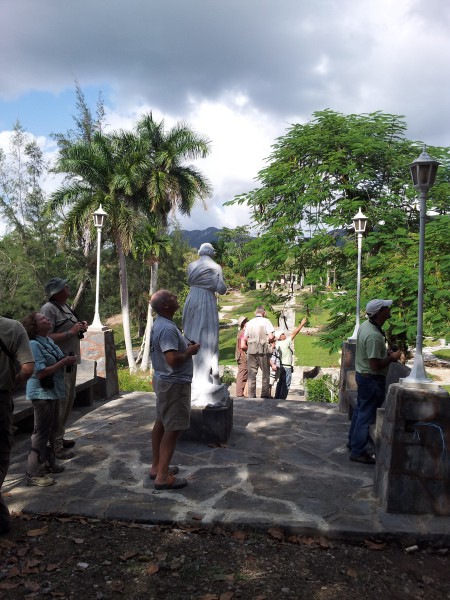Fall 2016 Cuba Bird Survey
November 6 – 14, 2016: Cuba’s Wild Western Peninsula, Western Mountains, Zapata Swamp, and Colonial Havana.
November 15 – 17, 2016: optional “Birds of Cayo Coco” extension
The Caribbean Conservation Trust, Inc. (CCT) is promoting an exclusive, U.S. led and managed birding program to Cuba! The program is coordinated under U.S. government authorization by CCT, which is based in Connecticut. CCT staff have a 20 year history of managing bird conservation programs in Cuba. Along with CCT Ornithologist Michael Good, and Dr. Luis Diaz, Curator, National Museum of Natural History, Havana, our team includes a bilingual Cuban tour guide, and 3 additional regionally located Cuban naturalists. They will guide you through a variety of natural areas in Cuba, the Caribbean’s largest, most ecologically diverse island nation.
CCT designed this itinerary to take you to Cuba’s finest bird habitats, most beautiful national parks, diverse biosphere reserves, and unique natural areas. We will interact with local scientists and naturalists who work in research and conservation. In addition to birding, we will learn about the ecology and history of regions we visit. Finally, and especially given the ongoing changes in U.S. – Cuban relations, we can expect some degree of inquiry into fascinating aspects of Cuban culture, history, and daily living during our visit.



Where We Travel
Our Cuba Bird Survey begins and ends in Havana, with an evening in a comfortable hotel in a quiet residential part of the city. We return to Havana at the end of the birding program, spending an afternoon and evening as described below.
The Guanahacabibes Peninsula
The Guanahacabibes Peninsula
The Guanahacabibes Peninsula, located at the far western tip of the island, is one of the last remaining wild places in the Caribbean. A major migratory corridor, this peninsula lies parallel to the Yucatan Peninsula in eastern Mexico, and adjacent to the Palancar Reef, the largest contiguous coral reef in the northern hemisphere, second in size only to the Great Barrier Reef. The peninsula is also home to a number of important aboriginal archaeological sites. The peninsula was Cuba’s first significant protected area following the triumph of the revolution in 1959, and in 1987 declared a Biosphere Reserve by UNESCO. The Bee Hummingbird, Cuban Crow, Cuban Parrot, as well as numerous other birds are quite likely here (2 nights).
Cuba’s Western Mountains
Zapata Peninsula - Bay of Pigs
Cayo Coco and Cuba’s Atlantic Archipelago
OPTIONAL 3 DAY/NIGHT EXTENSION
to Cayo Coco and Cuba’s Atlantic Archipelago
Cayo Coco and Cuba’s Atlantic Archipelago provide excellent birding opportunities on Cuba’s Atlantic coast. These previously uninhabited and relatively unexplored islands were connected to the mainland by an 18+ mile causeway completed in 1989. Cuba’s academy of sciences (CITMA) maintains a research facility here. These barrier islands and keys provide unique opportunities for: Cuban Gnatcatcher, Oriente Warbler, Thick-billed Vireo, Bahama Mockingbird, West Indian Whistling Duck, as well as numerous shorebirds and aquatic birds. This region also provides additional opportunities to see rare endemics such as Zapata Sparrow & Gundlach’s Hawk. Accommodations are in a modern beachfront resort (2 nights).
Havana
Havana
Our program concludes in HAVANA, among the most authentic colonial cities in the Americas. At the end of the birding program, you will have an evening in Havana, one of Latin America’s best preserved and most compelling colonial cities. Our last night in Havana will include all meals, a guided city tour, including a walking tour of Habana Vieja (Old Havana) and the 4 original plazas, declared a UNESCO World Heritage site in 1987, Old Havana is like a living museum, and is currently undergoing rapid, energetic change.
